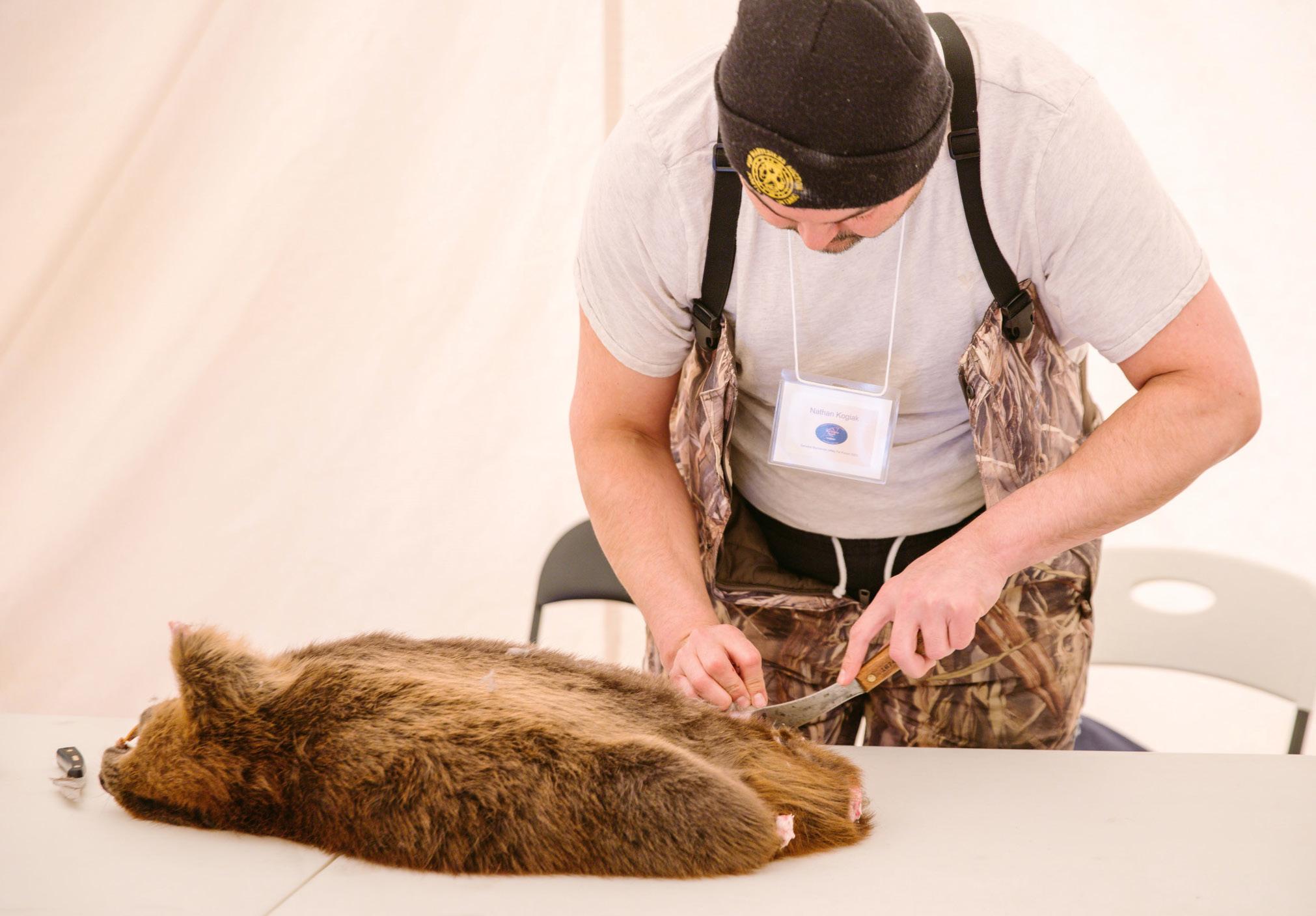
2 minute read
Fur freefall persists in Nunavut, NWT
By Derek Neary Northern News Services
Fur payouts in Nunavut and the Northwest Territories continue to decline.
Nunavut’s Department of Environment paid $187,782.52 to Inuit harvesters through the fur assessment and advance program in 2022-23. That’s a 20.4 per cent decline from $235,767.17 in 2021-22. As an example of how far payouts have fallen, the Department of Environment shelled out $431,053.24 to harvesters in 2017-18.
Seal skins once again dominated the scene in Nunavut, accounting for 74 per cent of the pelts or hides that harvesters submitted through the fur assessment and advance program in 2022-23. However, payments fell year over year in every category except wolverine.
The Government of Nunavut has budgetted $150,000 for its seal contribution program in 2023-24, the same as the previous year. The $12,000 toward marketing through the Seals and Sealing Network and $10,000 dedicated to the Seal Grant Program are also on par with 2022-23.
In the NWT, the $235,000 fetched at auction as of the year ended June 30, 2022 represented a 39.5 per cent decrease from 2021. There were approximately 9,800 pelts harvested in the NWT in 2021-22, which was 4.8 per cent fewer than a year earlier, and only one-third of those pelts found buyers at auction.
The most recent sale held through Fur Harvesters Auction Inc. in North Bay, Ont., was on May 26-28.
The GNWT operates the Fur Marketing Service Revolving Fund, which has a limit of $1.5 million. This fund provides trappers with “interest-free advances on furs sent to southern auction houses.” The GNWT envisions $965,000 owing through this fund in 2023-24, but notes that some furs require extended periods to sell at auction.
The Department of Industry, Tourism and Investment invests $155,000 annually for the marketing and promotion of the Genuine Mackenzie Valley Fur Program. Trappers in decline
There were just 434 commercial trappers in the NWT as of 2022, which was the lowest number on record, according to the GNWT. The Covid-19 pandemic had a “significant negative impact on the fur trade,” the government noted.
In 2023-24, territorial government funding for the Fur Price Program amounts to $605,000. These are grants provided to trappers “in the form of a minimum price for the fur of selected species. The grant is available on good quality and well-handled pelts,” the GNWT states.
Although many NWT furs are sent to the North Bay auction, muskox, polar bear, seal and moosehide are, instead, tanned and sold at cost to NWT craftsmakers through the GNWT’s Hide and Fur Program. Polar bear hides were recently added to that program because the market demand for them has all but disappeared. Harvesters earn a $1,750 advance for polar bear hides and another $450 is available through a prime fur bonus.
Auction results
At the May Fur Harvesters Auction in North Bay, Ont., where many NWT furs go on the block, 100 per cent of the 1,809 lynx pelts on offer sold with the average price fetching $114.22 and a high of $180. That marked a significant rebound from the auction held in March 2022 when lynx went for $67.82 on average.
Timber wolf was in demand with 99 per cent sold and the average price for specimens from the Arctic region reaching $251.06.
Mink was largely in line with last year at $8.84 on average ($8.14 in March 2022). However, only 32 per cent of the inventory sold.
The muskrat market remained extremely poor with most of the 266,541 hides going unsold.
Just $235,000 was realized at auction for the one-third of NWT pelts that sold in 2021-22, according to the GNWT, down 39.5 per cent from the previous year. In Nunavut, the payout to harvesters declined by 20.4 per cent to $187,782.52 in 2022. Photo courtesy of the Department of Industry, Tourism and Investment










